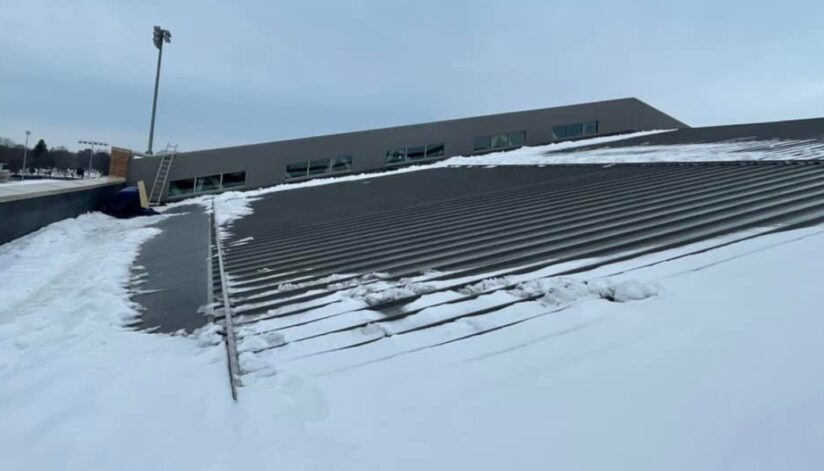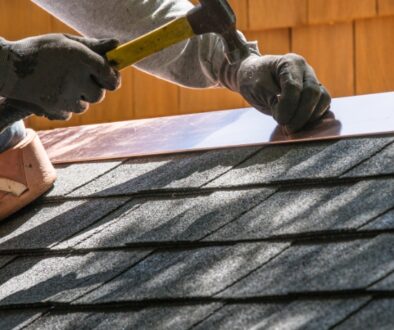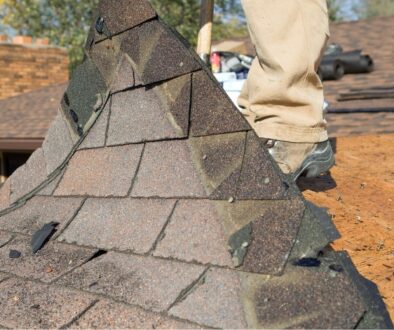How To Manage Snow On Flat Commercial Roofs
In La Crosse, Wisconsin, winter brings heavy snow, which can pose serious risks for commercial buildings with flat roofs. Managing snow effectively is essential to maintaining your roof’s structural integrity and ensuring the safety of your building. Our commercial roofing experts will go through what you need to know about the risks of snow accumulation, how to manage it it safely, and removal on flat roofs.
The Risks Of Snow Accumulation On Flat Roofs
Flat roofs are designed to handle a specific weight load, but heavy snowfall can quickly exceed these limits. Here are some key risks associated with snow buildup:
- Structural Stress: Snow is heavy, especially when wet or compacted, and excessive accumulation can strain the roof’s structural components, leading to sagging or, in extreme cases, the roof to collapse.
- Ice Dams: Heat escaping from the building can melt snow, which then refreezes at the roof’s edges, forming ice dams that block drainage and cause water to back up.
- Water Pooling: Melted snow can pool on flat roofs if the drainage system is blocked, increasing the likelihood of leaks or water damage.
- Gutter Damage: The added weight of snow and ice can cause gutters to sag or break.
Tips For Management And Removal Of Snow On Flat Roofs
Managing snow on flat commercial roofs requires careful planning and the right approach to prevent damage.
1. Monitor Snow Accumulation
Regular monitoring is important to help prevent problems before they get worse.
- Visual Inspections: Regularly inspect the roof for heavy snow or ice buildup.
- Watch For Structural Cues: Look for things like sagging ceilings, cracking walls, or creaking sounds, which could indicate excessive snow load.
2. Keep Drains And Gutters Clear
A functioning drainage system helps with handling melting snow and ice.
- Pre-Winter Maintenance: Ensure roof drains and gutters are clear of debris before the snowy season begins.
- Heat Cables: Consider installing heat cables in gutters to prevent ice buildup and maintain proper drainage.
3. Use The Right Tools For Snow Removal On Flat Roofs
Removing snow incorrectly can damage the roof. Use proper tools and techniques to protect the roof’s surface.
- Roof Rakes: A roof rake with a long handle allows for snow removal from the ground. (You should avoid direct contact with the roof when doing this.)
- Avoid Sharp Tools: Metal shovels and other sharp tools can puncture roofing materials and should not be used.
4. Prevent Ice Dams
Ice dams can cause water to back up onto the roof, which can lead to leaks and structural damage.
- Insulation: Proper insulation reduces heat loss, which helps prevent snow from melting and refreezing.
- Ventilation: Adequate roof ventilation regulates attic temperatures and minimizes ice dam formation.
5. Practice Safety
Working on a roof in winter can be hazardous.
- Prioritize Safety Gear: Use non-slip footwear and secure ladders for any roof-related tasks.
- Avoid Icy Conditions: Schedule snow removal during milder weather to reduce the risk of slips and falls.
Protect Your Roof This Winter With Ledegar Roofing
Managing snow on a flat commercial roof is essential to avoid costly repairs and keep your building safe. By regularly inspecting your roof, clearing snow and debris, and taking preventative measures, you can protect your property throughout Wisconsin’s harsh winters.
If you’re in the Coulee Region, and need help with winter roof maintenance, contact Ledegar Roofing today. Our experienced team is ready to assist with expert advice and services tailored to your needs. Call us at 608-785-0901 or visit our contact us page today.




